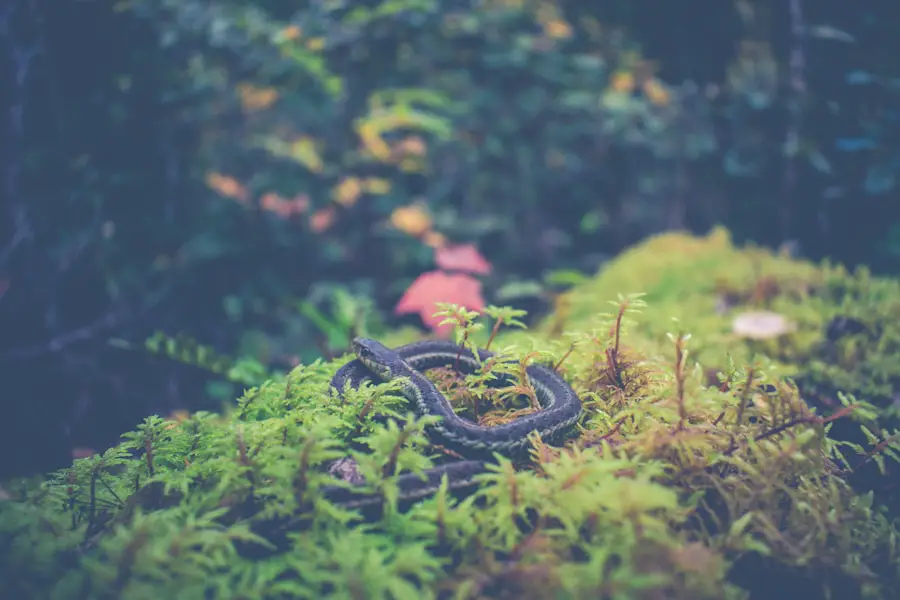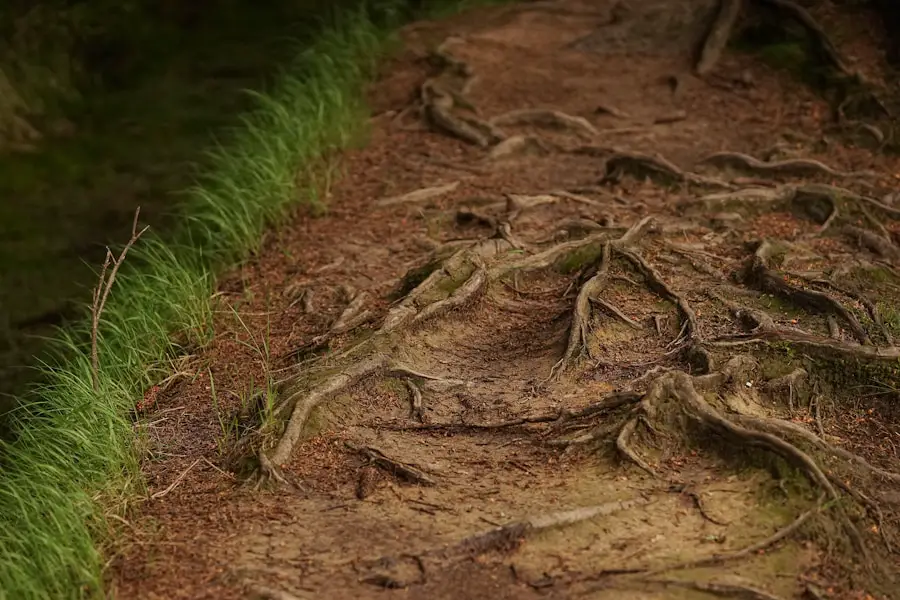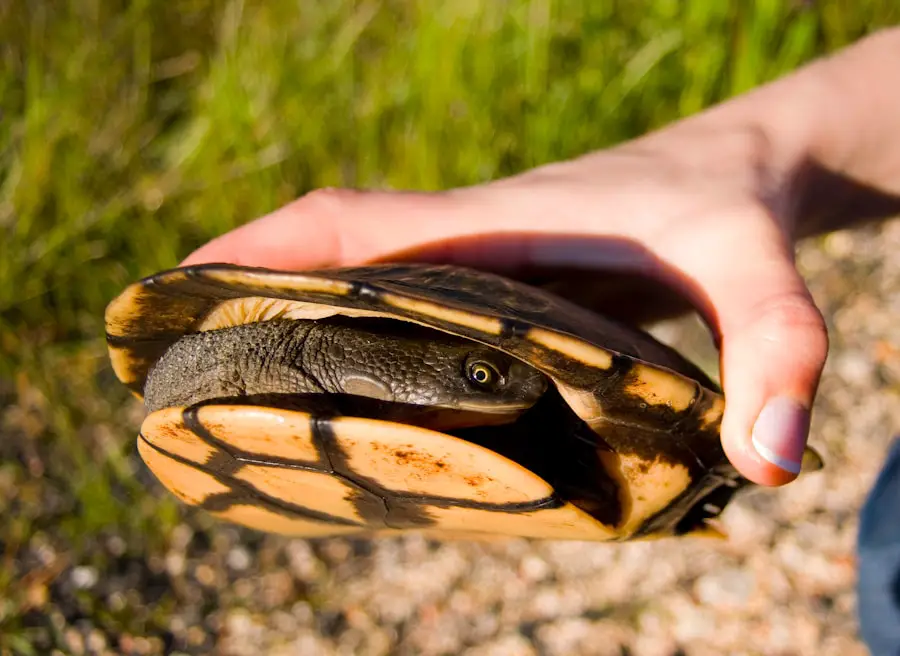To effectively navigate environments where snakes may be present, it is crucial to develop a comprehensive understanding of their behavior. Snakes are ectothermic reptiles, meaning they rely on external sources of heat to regulate their body temperature. This characteristic influences their activity patterns, as they tend to be more active during warmer months and often bask in the sun to absorb heat.
Understanding this behavior can help hikers anticipate when and where they might encounter snakes. For instance, during the early morning or late afternoon, snakes may be more active as they seek warmth, while during the hottest parts of the day, they may retreat to cooler, shaded areas. Additionally, recognizing the signs of snake presence can enhance safety.
Snakes often prefer habitats that provide cover, such as tall grass, dense underbrush, or rocky crevices. They may also be found near water sources, as these areas attract both prey and provide hydration. Observing the environment for these indicators can help hikers avoid potential encounters.
Furthermore, understanding that snakes are generally non-aggressive and will often retreat when given the opportunity can alleviate some fears. Most snakes would rather avoid confrontation and will only strike if they feel threatened or cornered. This knowledge can empower individuals to remain calm and composed in the event of an encounter.
Key Takeaways
- Snakes are generally shy and will avoid humans if given the chance
- Wear closed-toe, sturdy shoes or boots while hiking to protect against snake bites
- Stick to designated trails to minimize the risk of encountering snakes
- Use a hiking stick to probe areas where snakes may be hiding and to create vibrations that warn snakes of your approach
- Stay alert and aware of your surroundings to avoid surprising or startling snakes
Choosing the Right Footwear
Selecting appropriate footwear is a fundamental aspect of snake safety while hiking. Sturdy, high-top boots made from thick materials can provide a significant barrier against snake bites. Leather or synthetic materials that are both durable and resistant to punctures are ideal choices.
These types of boots not only protect against snake fangs but also shield the feet from sharp rocks and thorny plants that may be encountered on rugged trails. Additionally, boots with a good grip can prevent slips and falls on uneven terrain, further enhancing safety. It is also advisable to wear gaiters in conjunction with boots, especially in areas known for high snake populations.
Gaiters are protective coverings that wrap around the lower legs and can help prevent snakes from accessing the skin directly. They act as an additional layer of defense against potential bites while also keeping debris out of footwear. When selecting footwear for hiking in snake-prone areas, it is essential to ensure that they fit well and provide adequate support for long treks.
A well-fitted boot not only enhances comfort but also reduces the risk of blisters and injuries that could lead to a more dangerous situation if one were to encounter a snake.
Staying on Designated Trails

Staying on designated trails is a critical practice for minimizing encounters with snakes while hiking. Trails are typically cleared of dense vegetation and provide a clear path for hikers, reducing the likelihood of stumbling upon a snake hidden in underbrush or tall grass. By adhering to marked paths, hikers can avoid areas where snakes are likely to be resting or hunting, as these locations often feature abundant cover and prey.
Furthermore, designated trails are usually maintained by park services or local authorities, which means they are more likely to be safe and free from hazards. In addition to reducing the risk of snake encounters, staying on trails helps preserve natural habitats. Venturing off established paths can lead to habitat destruction and disrupt local ecosystems.
Many species of snakes play vital roles in their environments, such as controlling rodent populations and maintaining ecological balance. By respecting trail boundaries, hikers contribute to conservation efforts and ensure that wildlife can thrive without unnecessary disturbances. This practice not only enhances personal safety but also promotes responsible outdoor ethics.
Using a Hiking Stick
| Benefits of Using a Hiking Stick | Statistics |
|---|---|
| Reduced Impact on Joints | Research shows that using a hiking stick can reduce impact on knees by up to 25%. |
| Improved Stability | Using a hiking stick can improve stability and balance, reducing the risk of falls by 30%. |
| Increased Endurance | Hikers using a stick report feeling less fatigued and able to hike longer distances. |
| Calorie Burn | Using a hiking stick can increase calorie burn by up to 20% compared to hiking without one. |
Incorporating a hiking stick into your gear can serve multiple purposes when it comes to snake safety. A hiking stick can be used as an extension of your reach, allowing you to probe ahead in areas where visibility is limited. By gently tapping the ground or brush ahead of you, you can alert any nearby snakes to your presence, giving them a chance to retreat before an encounter occurs.
This proactive approach can significantly reduce the likelihood of surprising a snake, which is often when bites occur. Moreover, a hiking stick provides additional stability on uneven terrain, helping hikers maintain balance while navigating rocky or slippery surfaces. This added support can be particularly beneficial in areas where snakes may be hiding among rocks or fallen branches.
The stick can also serve as a tool for clearing away small obstacles or debris from the trail, further enhancing visibility and safety. When choosing a hiking stick, consider one that is lightweight yet sturdy, allowing for easy maneuverability without sacrificing strength.
Being Mindful of Surroundings
Being aware of your surroundings is paramount when hiking in areas where snakes may be present. This mindfulness extends beyond simply watching for snakes; it involves being attuned to the entire environment. Listening for sounds such as rustling leaves or movement in the underbrush can provide early warnings of nearby wildlife.
Additionally, paying attention to the terrain can help identify potential snake habitats, such as rocky outcrops or dense vegetation where snakes might seek shelter. Practicing situational awareness also means being conscious of your own movements and actions. Avoid sudden movements that could startle wildlife and lead to defensive behavior from snakes.
Instead, move deliberately and calmly through your environment. If you spot a snake at a distance, observe it from afar rather than approaching it out of curiosity. This respect for wildlife not only enhances personal safety but also fosters a deeper appreciation for nature and its inhabitants.
Knowing First Aid for Snake Bites

Understanding first aid procedures for snake bites is essential for anyone venturing into snake-prone areas. In the unfortunate event of a bite, remaining calm is crucial; panic can exacerbate the situation by increasing heart rate and spreading venom more quickly through the bloodstream. The first step is to immobilize the affected limb and keep it at or below heart level to slow venom circulation.
It is important not to apply ice or a tourniquet, as these methods can cause more harm than good. Seeking immediate medical attention is vital after a snake bite, regardless of whether the snake is venomous or not. While waiting for help to arrive, it is advisable to remove any tight clothing or jewelry near the bite site to allow for swelling.
If possible, take note of the snake’s color and markings without attempting to capture it; this information can assist medical professionals in determining the appropriate treatment. Familiarizing oneself with local snake species and their venomous counterparts can also aid in recognizing potential risks before heading out on hikes.
Properly Handling Encounters with Snakes
When encountering a snake on the trail, knowing how to respond appropriately can make all the difference in ensuring safety for both the hiker and the snake itself. The first rule is to remain calm and avoid sudden movements that could provoke the snake into defensive behavior. Most snakes will not attack unless they feel threatened; therefore, giving them space is essential.
If you spot a snake on the trail, take a step back and allow it time to move away on its own accord. If a snake does not retreat and you need to pass by it, maintain a safe distance and move slowly around it without making direct eye contact. Snakes often rely on their camouflage for protection; thus, they may not perceive you as a threat if you remain calm and composed.
It’s important not to attempt to handle or provoke the snake; this could lead to an unnecessary bite and escalate an already tense situation. Instead, focus on safely navigating around it while respecting its space.
Educating Others about Snake Safety
Promoting awareness about snake safety among fellow hikers and outdoor enthusiasts is an important step toward fostering a safer environment for everyone involved. Sharing knowledge about snake behavior, proper footwear choices, and first aid procedures can empower others to take proactive measures when exploring nature. Organizing community workshops or informational sessions can serve as effective platforms for disseminating this information while encouraging discussions about wildlife conservation.
Additionally, utilizing social media platforms or local outdoor clubs can help spread awareness about best practices for hiking in snake-prone areas. Creating informative content such as articles, videos, or infographics can engage a wider audience and emphasize the importance of respecting wildlife habitats while ensuring personal safety. By educating others about snake safety, we contribute not only to individual well-being but also promote coexistence with these often-misunderstood creatures in our natural environments.
When hiking in snake-prone areas, it is important to be aware of your surroundings and take precautions to avoid encounters with these potentially dangerous creatures. One helpful article to check out is this guide on how to choose the best travel fishing rod, which may offer tips on how to stay safe while exploring the great outdoors. Remember to stay on designated trails, wear long pants and sturdy boots, and make noise while hiking to alert snakes of your presence and avoid surprising them.
FAQs
What are some tips for avoiding snakes while hiking?
– Stick to well-worn trails and avoid tall grass and dense underbrush where snakes may hide.
– Wear sturdy hiking boots and long pants to protect your lower legs from potential snake bites.
– Be cautious when stepping over logs or rocks, as snakes may be hiding underneath.
– Use a walking stick to probe areas where you cannot see clearly, such as tall grass or bushes.
What should I do if I encounter a snake while hiking?
– Remain calm and slowly back away from the snake to give it space.
– Do not attempt to touch or handle the snake, as this can provoke it to strike.
– If the snake is blocking your path, try to find an alternative route around it.
– If you are bitten by a snake, seek medical attention immediately and try to remember the snake’s appearance to help with treatment.
What are some common snake habitats to be aware of while hiking?
– Snakes are often found near water sources such as rivers, lakes, and streams.
– They may also be found in rocky areas, wood piles, and sunny open spaces where they can bask in the sun.
– Keep an eye out for snakes in areas with abundant prey, such as rodents and insects.
Are there any specific times of day when snakes are more active?
– Snakes are generally more active during the early morning and late afternoon when temperatures are cooler.
– They may also be more active during the spring and fall when they are mating or seeking food before hibernation.
What are some common snake species to watch out for while hiking?
– Depending on your location, you may encounter venomous snakes such as rattlesnakes, copperheads, and cottonmouths in North America.
– In other parts of the world, you may encounter venomous species such as vipers, cobras, and mambas.
– It’s important to familiarize yourself with the types of snakes in the area where you will be hiking and learn how to identify them.
